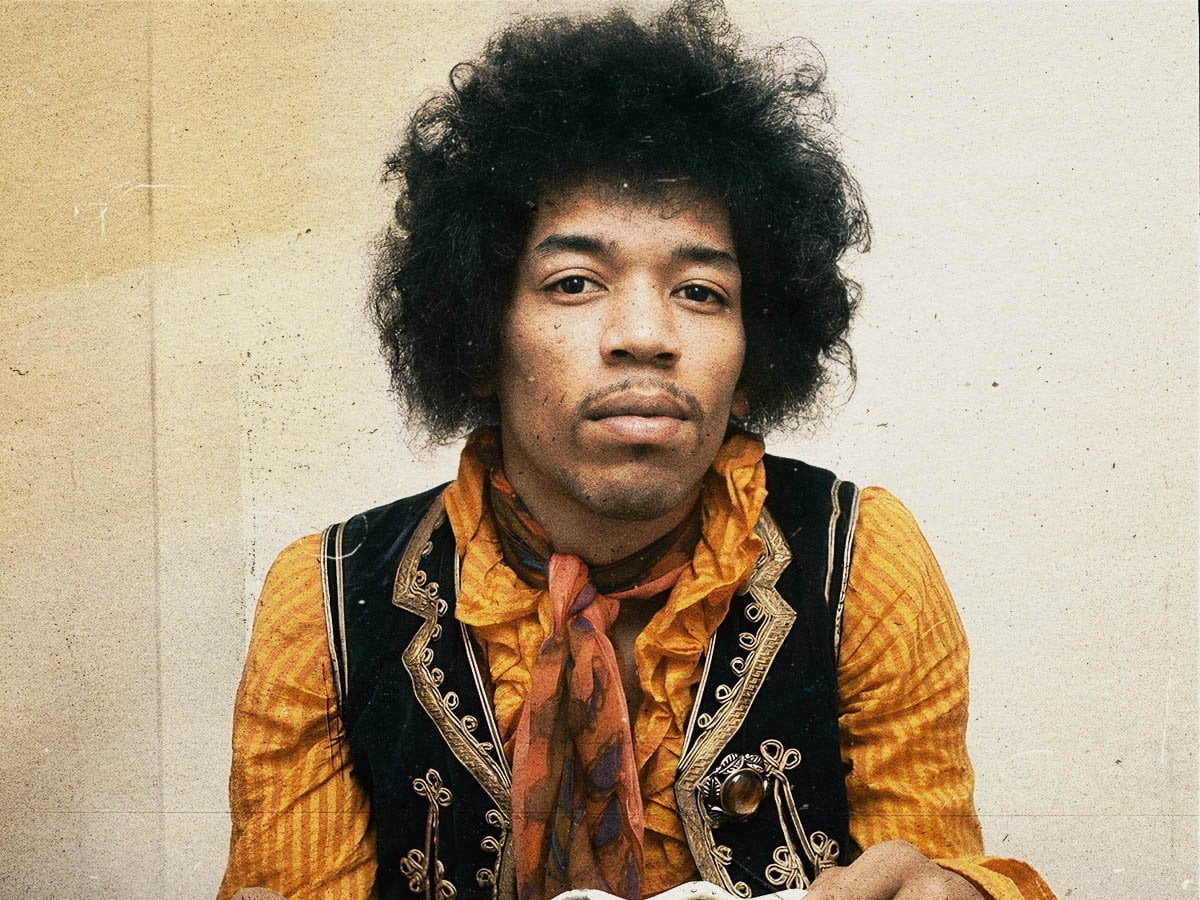Table of Contents
Jimi Hendrix A Guitar Master
Jimi Hendrix, the iconic guitar virtuoso, transcended the boundaries of music with his revolutionary approach to the electric guitar. Born in 1942, Hendrix pioneered a sonic revolution in the 1960s, blending blues, rock, and psychedelia into a mesmerizing symphony. His fingers danced on the strings, creating a kaleidoscope of sound that defied convention and left an indelible mark on the music industry. From the electrifying stages of Woodstock to the intimate recordings of “Purple Haze” and “All Along the Watchtower,” Hendrix’s music resonates across generations, a timeless testament to his unparalleled talent and enduring influence on the world of rock and roll.

About Jimi Hendrix
Introduction:
Jimi-Hendrix, a name synonymous with electric guitar mastery, left an indelible mark on the world of music that reverberates to this day. Born Johnny Allen Hendrix on November 27, 1942, in Seattle, Washington, Jimi’s unparalleled talent and innovative approach to the guitar catapulted him to legendary status in the realm of rock and roll. This article delves into the life, music, and enduring legacy of the man who, in a brief but spectacular career, reshaped the landscape of contemporary music.
Early Life and Musical Beginnings:
Jimi-Hendrix’s journey into the world of music began in his early years when he received his first acoustic guitar at the age of 15. Growing up in a challenging environment, Hendrix found solace in music, teaching himself to play and absorbing influences from blues, R&B, and rock and roll. His stint as a sideman for various acts, including Little Richard and the Isley Brothers, allowed him to hone his skills and develop a distinctive style that would soon captivate audiences worldwide.
The Experience of a Lifetime:
It was in 1966 that Hendrix formed the Jimi-Hendrix Experience, a power trio that included bassist Noel Redding and drummer Mitch Mitchell. The release of their debut album, “Are You Experienced,” in 1967 marked the beginning of a seismic shift in the music landscape. With tracks like “Purple Haze,” “Foxy Lady,” and “Hey Joe,” Hendrix showcased his virtuosity, blending psychedelic rock, blues, and soul into a genre-defying sound that resonated with a generation hungry for something new.
Monterey Pop Festival:
The iconic performance at the Monterey Pop Festival in 1967 served as Hendrix’s introduction to American audiences. His onstage theatrics, including the now-legendary guitar burning during “Wild Thing,” left an indelible impression and solidified his status as a groundbreaking artist. The image of Hendrix kneeling over his blazing guitar became an enduring symbol of the counterculture movement of the 1960s.
Innovation and Experimentation:
Hendrix was not just a virtuoso guitarist; he was a sonic innovator. His revolutionary use of feedback, distortion, and controlled chaos pushed the boundaries of what was thought possible with an electric guitar. Tracks like “Voodoo Child (Slight Return)” and “Machine Gun” showcased his ability to create a kaleidoscope of sounds, taking listeners on a journey through the uncharted realms of musical expression.
Legacy and Influence:
Jimi Hendrix’s untimely death in 1970 at the age of 27 marked the end of a meteoric career, but his legacy lived on. His impact on rock and roll, blues, and the broader musical landscape cannot be overstated. Hendrix inspired countless musicians to push creative boundaries and redefine the possibilities of their instruments. His influence can be heard in the music of artists ranging from Eddie Van Halen to Prince, ensuring that the spirit of Hendrix continues to echo through generations.
Conclusion:
Jimi-Hendrix, the guitar virtuoso and sonic pioneer, carved out a musical legacy that transcends time and genre. His ability to meld technical proficiency with raw emotion and experimentation set him apart as a true icon of rock music. Though his time on this earth was tragically short, the impact of Hendrix’s music is enduring, a testament to the enduring power of artistic innovation and creative expression. As we continue to explore the vast landscape of music, the electrifying spirit of Jimi Hendrix remains a guiding force, forever altering the way we perceive and experience the power of the electric guitar.
FAQ
Who is Jimi Hendrix?
Jimi Hendrix was a legendary American guitarist, singer, and songwriter. Born in 1942, he rose to fame in the late 1960s and is widely regarded as one of the greatest guitarists in the history of rock music.
What is the Jimi Hendrix Experience?
The Jimi Hendrix Experience was a power trio formed in 1966, consisting of Jimi Hendrix, Noel Redding on bass, and Mitch Mitchell on drums. They released groundbreaking albums like “Are You Experienced” and “Axis: Bold as Love.”
What is Jimi Hendrix’s musical style?
Hendrix’s musical style is a fusion of blues, rock, R&B, and psychedelia. His innovative use of the electric guitar, along with experimental techniques, created a distinctive and influential sound that continues to inspire musicians across genres.
What are some of Jimi Hendrix’s most famous songs?
Some of Hendrix’s most famous songs include “Purple Haze,” “Hey Joe,” “Foxy Lady,” “Voodoo Child (Slight Return),” and “All Along the Watchtower.”
How did Jimi Hendrix influence the music industry?
Hendrix revolutionized the use of the electric guitar, introducing innovative techniques such as feedback, distortion, and unconventional playing styles. His influence extends beyond his era, shaping the sound of rock, blues, and contemporary music.
When and how did Jimi Hendrix pass away?
Jimi Hendrix passed away on September 18, 1970, at the age of 27. He died of asphyxiation in London. The circumstances surrounding his death remain a subject of discussion and speculation.
What is Jimi Hendrix’s legacy?
Jimi Hendrix’s legacy is profound, with an enduring impact on the music industry. He is remembered for his unparalleled guitar skills, innovation in sound, and as a symbol of the counterculture movement of the 1960s.



